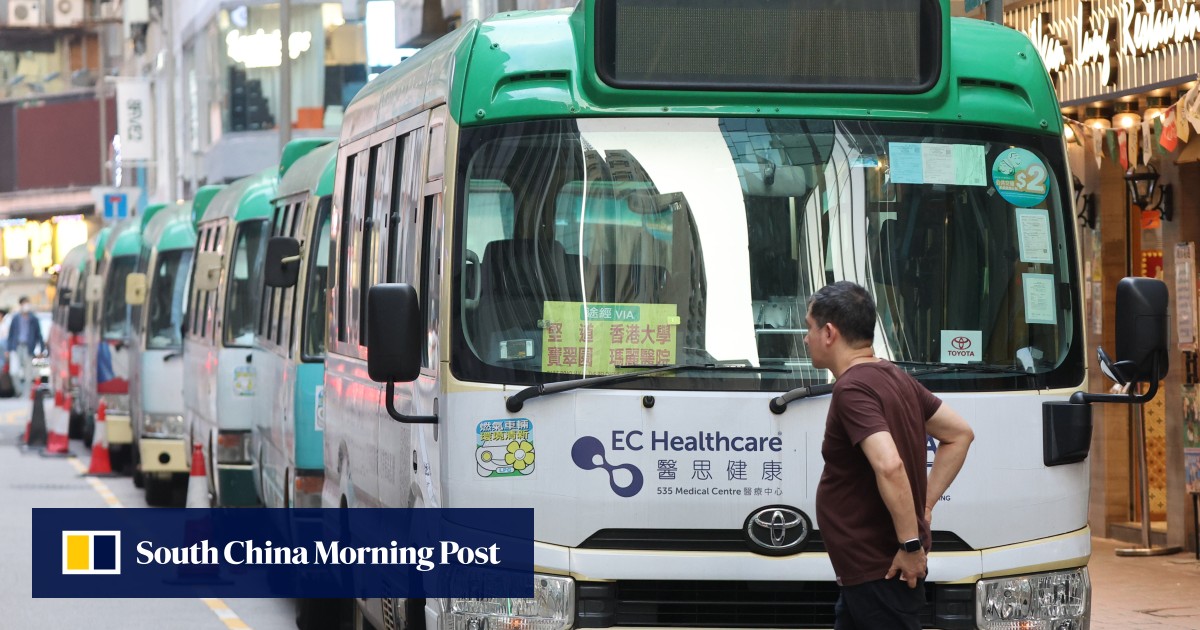People hired under the scheme must be paid a monthly rate no lower than the median in the sector, which is HK$14,300 (US$1,830) for minibus drivers.
Apart from the salary, minibus operators had to cover training, driving test and accommodation costs, which could add up to as much as HK$30,000 a month for each imported driver, Luk said.
Hong Kong road test for mainland minibus drivers tricky, trade chiefs say
Hong Kong road test for mainland minibus drivers tricky, trade chiefs say
“Why not pay a little higher? Why not provide better treatment?” Luk said, suggesting a salary of HK$18,000 to HK$20,000 a month for local drivers.
He said HK$18,000 was closer to what bus drivers received and the median income of others in the transport sector.
Luk added that the median income of HK$14,300 was also not very attractive to mainland drivers.
“If you drive a cab, vehicle for ride-hailing services, or a truck, you can make 8,000 yuan [US$1,120] or even up to 10,000 yuan,” Luk said.
“If they come to Hong Kong, they’re having to leave their family and pay for a range of administrative fees.
“Rather than racking their brains in getting imported labour, we urge the minibus industry to improve the pay and treatment of local drivers.”
Chan Fung-yuen, chairman of the minibus branch of the Public Light Bus Branch of the Motor Transport Workers General Union, quoted Transport Department figures showing there were 166,187 holders of full minibus licences but only around 8,000 were driving.
“The low pay, poor treatment and working environment are the primary reasons for the phenomenon,” Chan said.
Luk and Chan also called on operators to provide a one-hour lunch break for drivers on a nine-hour shift and arrange no more than four hours of overtime work per day. They added that there should be no less than 10 hours of rest between two consecutive work days, and seven to 14 days of annual leave.
Hong Kong transport operators prepare for first batch of mainland Chinese drivers
Hong Kong transport operators prepare for first batch of mainland Chinese drivers
Eric Tse Cheuk-yu of Hop Fat Light Bus Company Limited said he was training about a dozen drivers on the mainland and had rented a 600 sq ft flat in Tsuen Wan to house the ones about to arrive in Hong Kong.
“It’s a tough job to hire and train drivers on the mainland,” Tse said, adding that he was still doing so because of the chronic labour crunch and as they could not hire locally with HK$20,000 pay.
“In addition to the shortage, our drivers are also ageing. It’s not a problem that happened today. Legislator Luk should know that we have pointed out these issues multiple times but there has never been a solution,” Tse said, asking Luk to not make light of those working hard to tackle the issue.
He said it was not an issue that could be solved by simply raising pay, as there was a more structural problem of why the transport industry, including taxis, was failing to attract young people to join.
“If there are people willing to drive and have a good attitude in Hong Kong, I will definitely hire them,” he added. “Even if we import drivers, they only take up a very small proportion.”
He disagreed with Luk that being a minibus driver in Hong Kong was unattractive to those on the mainland as they could earn HK$17,000 to HK$18,000 if they worked overtime.
Tse said he had to invest at least HK$20,000 in each driver before they came to Hong Kong. Their first month in the city would be for training and tests, and they would be paid with accommodation provided. Once they started working, their salary and accommodation would cost operators about HK$20,000 a month.
Bringing in mainland drivers is part of a government plan rolled out last year to import 20,000 workers to ease the labour crunch in the construction, aviation and transport industries.
Under the scheme, authorities have approved 969 quota slots for the transport sector, with 461 for minibus drivers. The other spaces are for coach drivers.
The construction sector will be allowed to import 12,000 workers from the mainland, while Hong Kong International Airport can bring in 6,300 to fill vacancies for cleaners and other frontline roles.

